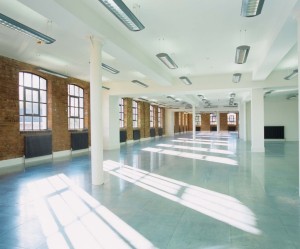| At Harvey Wright Architects we make it our business to understand the challenges commercial property developers face. We see it as part of our responsibility to ease the development process, taking away the stress involved in managing projects.The recent 2012 “Commercial property Market Outlook” report from Cluttons gives some fairly positive news for prime offices in Central London, with international buyers and equity funds competing for available stock; however it also forecasts that stock outside of the capital will not fair so well.
In our day-to-day work with commercial property developers we see the challenges they face and we often talk about these issues and how best to try to overcome them.
Below we have set out what we think is a useful set of thoughts and ideas about some of the major challenges facing commercial property developers in the current climate, which may be of interest to you.
Economic Outlook
Our commercial clients feel the economic outlook is patchy at best, uncertainty over whether the UK is out of recession is one factor.
Depending on which commentators or which statistics you read, the UK economy is growing, but as our commercial property clients know only too well, this does not reveal the full picture by sector, by region or even within London. The outlook is complicated further by macro-economic factors, not least of which is the Eurozone crisis.
In all, the economic outlook is uncertain, but most of our commercial clients take a more positive approach, believing you must look forward and plan for when the economic environment is brighter. By far the most successful approach is to pitch your property to the best of it’s potential, extending, refurbishing or just re-branding to maximise its exposure within the market place.
Funding
Many commercial property developers continue to have difficulties in securing funding. Our clients find that banks are particularly risk averse and that this may not change for some time. There remains a massive overhang of debt from the boom years with tens or even hundreds of billions of property loans maturing over the next few years. So, if the banks won’t or can’t lend, then what are the alternatives?
Some of our commercial property developer clients are looking at new funding sources including cross-border funding (where you sell debt overseas, for example direct to US institution), private investors (often through investor clubs, angel networks or consolidation funds) or corporate bonds (sold to either institutional or retail investors or both).
Being in a position to be able to access a range of funding options is definitely the main message coming from our commercial property clients. After all, if you have a building standing empty you are losing money and therefore finding a revenue stream to bring it up to rentable standards it essential and vital for the long term return of the property.
Sustainability
What does sustainability mean in practice?
Does designing in sustainability offer opportunities or present risks to commercial developers and investors? Our commercial property clients tend to have a plan for their existing and new commercial buildings. But, with an ever-changing landscape, it is essential that you updated your sustainability planning to keep pace with compliance, best practice and occupier needs.
Many commercial property tenants also have plans revolving around sustainability, environmental policies and so on. However it is also important to consider what your prospective tenant’s plans are, and to build them into your own.
Do your tenants want a lower carbon footprint? – If so then this may mean designing in, or retrofitting, renewable energy capabilities or enhanced insulation.
Do your tenants want to encourage their workforce to cycle to work? -If so, then providing secure bike storage adds value.
One of our recently completed refurbishment projects that incorporated many of these features (cycle storage, natural landscaping) achieved an ‘Excellent’ rating under BREEAM, as the highest scoring commercial and refurbishment project under BRE.
Legislation
The planning system is continuously under review and with the latest suggested changes this may provide alternative solutions for your property, not least the relaxation of the rules to change commercial use to residential, or the relatively recent changes to the Permitted Development Rights giving the option of creating additional space for offices and other non-domestic dwellings. But what ever changes are made it will still impact across all property sectors.
Click here for the latest government legislation: Permitted Development Rights
Bank capital ratios may be tightened by legislation and this will only add to the problems around funding availability.
DDA has been around for more than 15 years but many commercial properties coming up for refurbishment or redevelopment may be noncompliant and retrofitting may seem to be uneconomic, but with a bit of sideways thinking there are always ways to achieve what is now an essential requirement.
Sustainability regulations too, such as the Carbon Reduction Commitment, the requirement for higher BREEAM ratings, Part L,
More complicated planning compliance associated with increasing risk of flooding all add to the challenge for our commercial property developer clients. Not keeping pace with these changes may results in falling demand from occupiers at best and at worst punitive penalties
Summary
We accept that choosing the right architect can’t address all these challenges but we know that Harvey Wright Architects can add real value to the development process through our expertise in planning, careful design, and proficient management of your project. We can help you create a commercial property that will sell, lease or let quickly.
Further Reading
|












